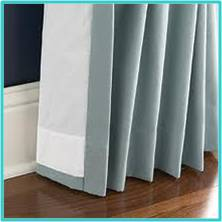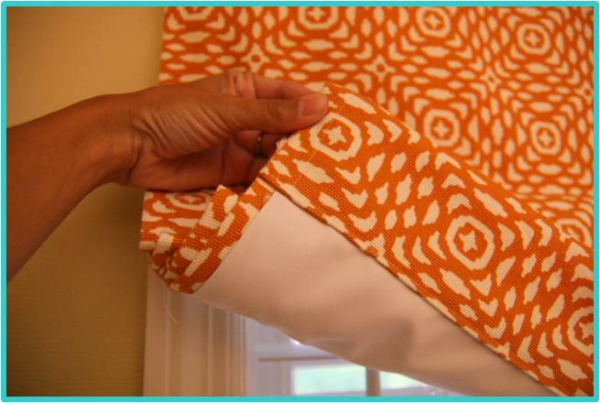Good quality linings on a drapery allows for more fullness and body to the pleats and folds due to the extra layering of fabric. Lined draperies also fight off condensation and moisture that often seeps in through windows with their water-repellant finish. These linings act as a protective layer for expensive face fabrics.
People aren’t the only ones who need protection from the sun. Fabric is often left neglected to battle against light. Drapery linings help protect against sun deterioration, decreasing the amount of exposure to face fabric upholstery and carpets and fading.
 |
 |
Who said extra weight was a bad thing? The extra weight that drapery linings add allows the draperies to hang beautifully. Linings de-wrinkle, allowing creases to smooth out.
To a long, healthy life. The extra protection provided by linings greatly extends the life of draperies. Linings also promote good health because they provide the dark, quiet environment that is important for quality sleep.
Energy savings = cost savings. The air pockets in the extra layering that drapery linings provide insulate windows, blocking solar heat gain during the summer or in warm climates and reducing drafts during the winter.
Privacy, please. In this time of heightened security awareness, drapery linings prevent wandering eyes from peering into your home. Silhouettes that can be seen through most draperies at night are eliminated.
What is a “Blackout” Drapery Lining?
A Blackout Drapery Lining (BDL) is a base fabric with a coating that prevents exterior light from entering through a window.
|
Why is that important? |
But how are they important to people? Sleep deprivation is increasing annually as people juggle work, school, family, and friends into their lives. Sleeping in turn is put on the backburner and this can have disastrous effects such as irritability, drowsiness, lack of concentration, and even deterioration of the immune system. Linings may not change a person’s mind to sleep longer, but at the bare minimum the quality of sleep will improve dramatically. BDL’s completely block out any light and impair sound disturbance, so absolute undivided attention is placed to getting rest, and getting it quickly.
|
Who will benefit the most from BDLs? BDLs do not just target one client niche, but are recommended for just about anyone, including but not limiting to: Are there different types of BDLs? |
|
Can you describe the difference? The 2-pass goes through the same manufacturing process, the exception being the very first pass of white acrylic foam. Therefore, the black opaque coat is applied directly to the base cloth and the cloth side in turn gives off a gray color. How do I decide whether to use a 2-pass or 3-pass BDL? Both styles hold same degree of blackout ability. |

